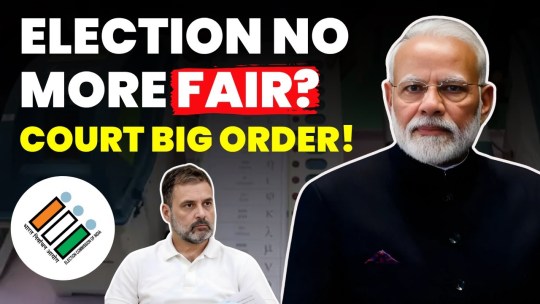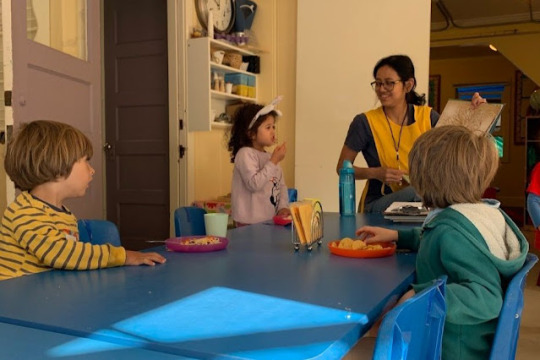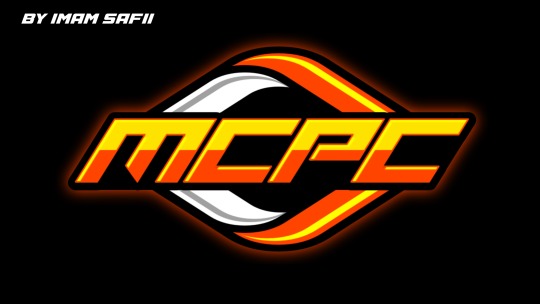#mcpc
Explore tagged Tumblr posts
Text
being so fr whose dick do i need to suck to get 128x128 skins in java like bedrock
#scribbles' post#minecraft#java minecraft#bedrock minecraft#mcpc#mcpe#being so deadass i HAVE THE SKIN READY
4 notes
·
View notes
Text
youtube
I get to play Minecraft with friends now!
#minecraft#youtube#minecraft lets play#minecraft youtube#minecraft smp#minecraft let's play#mcytumblr#mcyt fandom#mcpc#mcyt#arcadia smp#arcadia#gaymer#cherry blossom#cherry wood#cherry wood starter house#starter house#trails and tales#Youtube
4 notes
·
View notes
Text
Hiiii!!! Here’s a stupid ass oc!!! Wooo!!!


MCPC is 16, aroace, and incredibly eccentric and hyperactive, came to Gregory House after figuring out why their parents weren’t there and they relied on just leaving them with their technology. (their parents were both in the cartel or something? or like some sort of mafia? look i’m kind of not sure what would be good to write h) Aspiring music artist aka in this case kinda just fucked around and found out. Going to rant at you about how discs are the future (please don’t tell them how long they’ve actually existed for.) Can currently tell you everything about you even if you haven’t met them. When they came to Gregory House, they had already mapped out a bunch of info about everyone there already. They knew their interests, schedules, personal information, and everything else before they even talked to any of them. Basically just represents the fear of people knowing too much about you, or vice versa.
20 notes
·
View notes
Photo

Jun 26, 2025 08:29 PM IST The marketing campaign is being organised with the aims “to settle appropriate issues pending within the courts proper from the taluka courts to the excessive courts of India” New Delhi: A 90-day nationwide mediation marketing campaign to resolve pending disputes throughout courts—from district courts to excessive courts—will start on July 1, the Supreme Court’s mediation and conciliation undertaking committee (MCPC) and the nationwide authorized providers authority (NALSA) introduced on Thursday. The Supreme Court’s mediation and conciliation undertaking committee (MCPC) and the nationwide authorized providers authority (NALSA) introduced the Mediation for the Nation marketing campaign on Thursday. (ANI) The marketing campaign, Mediation for the Nation, shall be organised underneath the steerage of Chief Justice of India (CJI) Bhushan R. Gavai, patron of NALSA, together with NALSA government chairman and senior Supreme Court choose, Justice Surya Kant. A launch issued by the Supreme Court stated that the pan-India marketing campaign is being organised with the aims “to settle appropriate issues pending within the courts proper from the taluka courts to the excessive courts of India and taking mediation to each nook and nook of the nation as individuals’s pleasant mode of dispute decision.” “The Mediation for the Nation marketing campaign is being launched throughout India to settle the pending instances and make individuals imagine that mediation as a mechanism for dispute decision is peoples�� pleasant, cost-effective and speedy with means to save lots of relationships, money and time,” the assertion learn. Also Read: SC launches on-line mediation coaching portal to spice up different dispute decision The marketing campaign, which can conclude on September 30, will cope with instances involving pending matrimonial disputes, accident claims, home violence, cheque bounce offences, business disputes, service issues, felony compoundable instances, client disputes, debt restoration, property partition, eviction instances, land acquisition issues, and different appropriate civil instances. “The technique of case identification, data to events and referral to mediators will begin from July 1 and can proceed until July 30. These issues shall be transmitted to the involved courtroom and the whole settled issues shall be compiled by October 6 and despatched to the MCPC,” the assertion added. The marketing campaign could have sittings on all seven days of the week, with provision for hearings in offline, on-line, or hybrid mode. The taluka and district authorized providers authorities have been requested to facilitate on-line mediation. Read More: https://news.unicaus.in/india/nationwide-90-day-mediation-for-the-nation-marketing-campaign-to-start-on-july-1-sc/
0 notes
Text
Online Mediation Training in India: A Guide to Dispute Resolution and Arbitrator Fee Calculation
With the increasing demand for alternative dispute resolution (ADR) mechanisms, Online Mediation Training in India has gained significant popularity. It offers professionals and aspiring mediators an opportunity to learn the necessary skills and certifications required to resolve conflicts efficiently. Moreover, understanding how to calculate arbitrator fees is essential for practitioners in arbitration and mediation. Additionally, services like the Indian Dispute Resolution Service and CDRC services (Consumer Dispute Resolution Commission) play a crucial role in ensuring fair and effective resolution processes.
Online Mediation Training in India
Online Mediation Training India provide individuals with the expertise to mediate disputes in various fields, including commercial, family, and workplace conflicts. These courses typically include:
Theoretical understanding of mediation principles
Practical mediation techniques
Case studies and role-playing exercises
Certification programs recognized by legal institutions
Many organizations, such as the Indian Institute of Arbitration & Mediation (IIAM) and the Mediation and Conciliation Project Committee (MCPC) of the Supreme Court of India, offer structured mediation training programs.

How to Calculate Arbitrator Fees
How to Calculate Arbitrator Fee on several factors, including the nature and complexity of the dispute, the governing arbitration rules, and the agreed-upon fee structure. The following are common methods used to calculate arbitrator fees:
Fixed Fee – A predetermined amount agreed upon before the arbitration process begins.
Hourly Rate – The arbitrator is paid based on the number of hours spent on the case.
Ad Valorem Fee – The fee is calculated based on the claim amount, often following institutional arbitration guidelines.
Institutional Fee Schedules – Various institutions, such as the Indian Council of Arbitration (ICA) and the Singapore International Arbitration Centre (SIAC), provide structured fee schedules.
Understanding fee structures ensures transparency and helps parties in dispute manage their costs effectively.
Indian Dispute Resolution Service
The Indian Dispute Resolution Service (IDRS) is a platform that facilitates mediation, arbitration, and other ADR methods. It provides specialized services to help individuals, businesses, and government entities resolve disputes efficiently. Key features of IDRS include:
Expert panel of arbitrators and mediators
Online dispute resolution (ODR) mechanisms
Institutional support for arbitration and mediation
This service enhances access to justice and reduces the burden on traditional courts.
CDRC Services (Consumer Dispute Resolution Commission)
CDRC services cater to consumer-related disputes, providing a structured process for resolving conflicts between consumers and businesses. The key benefits of CDRC services include:
Quick and cost-effective dispute resolution
Consumer-friendly procedures
Reduced litigation costs
Binding and non-binding settlement options
CDRCs function under the Consumer Protection Act, 2019, and aim to safeguard consumer rights effectively.
Conclusion
The evolution of Online Mediation Training in India has paved the way for enhanced dispute resolution mechanisms. Understanding how to calculate arbitrator fees is crucial for professionals involved in ADR. Services like the Indian Dispute Resolution Service and CDRC services further contribute to a structured, efficient, and accessible legal system. With the increasing adoption of online platforms for mediation and arbitration, ADR continues to be a vital tool for effective conflict resolution in India.
0 notes
Text
𝐓𝐡𝐞 𝐄𝐯𝐨𝐥𝐮𝐭𝐢𝐨𝐧 𝐨𝐟 𝐒𝐚𝐭𝐞𝐥𝐥𝐢𝐭𝐞 𝐌𝐨𝐝𝐞𝐦𝐬 𝐢𝐧 𝐌𝐨𝐝𝐞𝐫𝐧 𝐓𝐞𝐥𝐞𝐜𝐨𝐦𝐦𝐮𝐧𝐢𝐜𝐚𝐭𝐢𝐨𝐧 (𝐋𝐚𝐭𝐞𝐬𝐭 𝐈𝐧𝐟𝐨𝐫𝐦𝐚𝐭𝐢𝐨𝐧)-IndustryARC™
Satellite modem or satmodem is an enhanced communication solution designed to establish data transmissions using a communications satellite as a relay. The prime function of a satellite modem is to convert an input bitstream into a radio signal and vice versa. Furthermore, satellite internet modem in communication is intended to use artificial satellites to offer communication links between various points across the earth. In addition, satellite modem market opportunity is significantly driven by the rise in trend of digitization in the Internet of Things solutions during the forecast period.
The satellite modem transforms digital data into carrier frequency for transfer to an amplifier and antenna for transmission to the satellite. Moreover, rise in demand for high-speed network communication solutions across military & defense, enterprise, and government sectors is expected to offer significant opportunities for the satellite modem market growth.
The satellite modem share is expected to witness notable growth during the forecast period, owing to increase in number of high-throughput satellites. Furthermore, surge in need for enriched high-speed data communication has driven the growth of the market. Moreover, increase in demand for satellite communications in Internet of Things (IoT) is expected to propel the satellite modem market size during the forecast period.
The global satellite modem outlook is segmented into satcom channel type, technology, application, end user, and region. On the basis of channel type, the market is bifurcated into SCPC modem and MCPC modem. The SCPC modem segment dominated the market, in terms of revenue, in 2020, and is expected to follow the same trend during the forecast period. By technology, it is divided into VSAT, satcom-on-the-move, satcom-on-the-pause, and others.
𝐃𝐨𝐰𝐧𝐥𝐨𝐚𝐝 𝐒𝐚𝐦𝐩𝐥𝐞 𝐏𝐚𝐠𝐞𝐬
The global satellite modem market was valued at $354.6 million in 2020, and is projected to reach $1033.4 million by 2030, registering a CAGR of 16.5% from 2021 to 2030.

0 notes
Text
0 notes
Photo

Hinge presents an anthology of love stories almost never told. Read more on https://no-ordinary-love.co
2K notes
·
View notes
Text
SR-9999HD-EXTREME V3.54 16052024.zip
Specifications: معرفی رسیور SR-9999HD DVB-S/DVB-S2 Satellite Compliant (MPEG-II/MPEG-IV/H.264) SCPC & MCPC receivable from Ku and C band satellites Universal, Single, Single S & C Band Wideband LNB Compatible Code Rates: 1/2, 3/5, 2/3, 3/4, 4/5, 5/6, 7/8, 8/9 and 9/10 Sensitive Tuner with Loop-Through
View On WordPress
0 notes
Text
Connections during the First Weeks of School

During the first weeks of school, the main goal for all the parents who work at MCPC is to make connection with all the kids. This connection is very important because it helps the kids know who are so when we explain things to them to correct behaviors or set boundaries, they listen to us.
This is my second year at MCPC, but I didn't get to connect with some of the older kids who were the 2nd year Owls and the 3rd year Bobcats. I did interact with them throughout the year, and they knew who I was, but of course since there wasn't that initial connection, at times I felt like they didn't want to listen to me and things were a little difficult.
This year, I got to work on our family's first work day. I was the Playroom Parents, and at first, only the Owls and Bobcats came in to enjoy all the activities that were set-up. But later, there were a lot of Turtles who came in to check out the activities and played. I was able to teach many of them how to roll out the play-dough and stamp-out some prints, helped some of the kids play make-believe and dress up as fire fighter and doctors, and even read a book or two to some of them. The funniest part was helping the turtles understand how to use the paper towel dispenser and how the next sheet that automatically came out after they ripped theirs was for the next person, not for them. And you know what? They listened!
At Circle Time, the rule is that your own child has priority to sit on your lap, and other kids can sit on your lap too, if you let them. My daughter is bobcat, so she went to the Cottage for 2nd Circle, so no one had "Dibs" to sit on my lap in the Playroom. So, when the Turtles came in and saw me sitting down already, many of them knew who I was and sat down right next to me. But there was one child who saw me and ran to me and was so comfortable that she sat right down on may lap. This really made me happy and made me feel like the connections were made with many of the Turtles.
Now, you might be wondering,,,, why do I need to make connections with the Turtles? Well, the connections between the working parents and children at the school create foundations of trust between all the parents. All of these kids will attend the same birthday parties and play dates, and because of these foundations, parents trust other MCPC parents to watch their kids during these functions. It's this trust and connection between the families at school at school that really makes everyone at MCPC feel like family.
When they say it takes a village to raise a family, I believe that MCPC is where you find your village.
If you're interested in learning more or joining our co-op, please contact a current MCPC parent at [email protected].
0 notes
Text
logo mcpc

1 note
·
View note
Text
ALTERNATIVE DISPUTE RESOLUTION
PROVISIONS OF MEDIATION UNDER ALTERNATIVE DISPUTE RESOLUTION
Introduction In place of the traditional adversarial court processes, it provides parties with an alternative that is confidential, collaborative, and flexible. This paper performs a thorough examination of mediation in India to elucidate its intricacies, processes, and basis in law. In mediation, an impartial third party (the mediator) assists the opposing parties in having fruitful conversations and reaching an agreement. The role of the mediator is to facilitate the parties' ability to reach a mutually agreeable resolution that takes into account their unique circumstances. The Arbitration and Conciliation Act of 1996 is the pillar upon which mediation in India rests, in contrast to litigation, which often results in victorious and defeated parties. The concepts and methods of mediation are acknowledged by this statute, which also acknowledges the enforceability of mediated settlement agreements, which are comparable to court rulings. To further promote mediation as an ideal means of conflict settlement, the Supreme Court of India formed the Mediation and Conciliation Project Committee (MCPC). Facilitates training classes, promotes mediation's application in different contexts, and sets standards for mediator accreditation. Mediation seeks to achieve mutually beneficial results. Mediation is a useful tool for resolving many different kinds of problems, including those involving families, businesses, employees, and more. In certain cases, mediation is mandated by law; in others, it is merely an option. In this article, we will examine the nuances of private mediation and mediation that is suggested by the court so that you may make an informed decision. Mediation is defined by its voluntariness, the preservation of party confidentiality, and the active participation of all parties. The parties are urged to communicate their issues openly and honestly as the mediator assists them in exploring creative alternatives that may not be apparent in a conventional courtroom. Confidentiality guarantee the safety of all parties involved in the mediation process. Speed, economy, and privacy are just a few of the numerous advantages of mediation, but it is not without its challenges. Some important topics that require consideration include the need for more people to recognise and embrace mediation as a valid method of resolving disputes and problems in carrying out mediated settlement agreements.
I. What is Mediation?
Mediators are impartial third parties that assist disputing parties in reaching a mutually acceptable settlement to their dispute. The mediator facilitates meetings between the disputing parties in an objective setting where they can air their grievances and brainstorm possible solutions. Everyone is invited to share their thoughts openly and honestly. Since the mediator is a neutral third party, they are able to step back and assess the situation objectively, which allows them to offer suggestions and ideas that the parties might not have considered before. Since the mediator isn't involved in the negotiation on a personal level, they are able to maintain objectivity. The mediation procedure is discrete and private. With the exception of cases involving fraud, waste, abuse, or criminal behaviour, conversations that take place during mediation are considered confidential and cannot be used in any administrative or adversarial legal process, according to federal courts. In the event that the parties are unable to resolve their disagreement through mediation and choose to pursue litigation in an administrative or court process, neither side will be able to subpoena the mediator or their notes.
II. Mediation Models Used in India
Mediation is a versatile dispute resolution process in India that may be tailored to the specific requirements of each party. As part of our analysis, we focus on the two main forms of alternative dispute resolution (ADR) in India's legal system: individual mediation and court-referred mediation. Courts have the power to send continuing legal cases to mediation under Section 89 of the 1908 Code of Civil Procedure [3]. Mediation that is referred to by a court is called this process. Divorce proceedings and other cases involving marital disputes often make use of this strategy. This mechanism emphasises the importance of mediation in India's system of alternative dispute resolution by actively promoting it as a means to speed up outcomes through the courts. Conversely, in individual mediation, competent third parties are engaged to mediate the dispute, usually for a predetermined price. Numerous groups and individuals, including businesses and government agencies, are welcome to participate in this plan. The parties to a dispute can freely choose private mediation, highlighting its availability and its usefulness in various societal circumstances. Indian mediation theory places an emphasis on the process's inherent adaptability and flexibility to accommodate the unique needs and preferences of each party involved in a dispute. It has become an established part of the Indian legal system and serves as a versatile method for settling disputes. Individual mediation, which can be used for a wide range of conflicts, and court-referred mediation, which are both options for more formal legal issues. The importance of mediation in expanding access to justice in India's legal system is acknowledged by this all-encompassing approach.
III. Mediating Procedure
The majority of conflict resolution processes in India include parties willingly deciding to mediate in order to reach a mutually acceptable resolution. By making the parties the focal point of the mediation, this approach guarantees objectivity. Through the guidance of a neutral third party, often a mediator, the disputing parties are guided towards a mutual settlement of their disputes. A mediator can help the parties with structured discussion and negotiation, or the parties can agree on an ADR lawyer amongst themselves. Crucially, mediation is completely optional, safeguarding the rights and authority of each party; furthermore, any party is free to withdraw from the process at any moment without providing an explanation. In India, the parties to a dispute are encouraged to take an active role in mediating their own dispute. Involvement in this process include outlining the relevant facts of the dispute and offering suggestions for possible settlements. The mediator's role is that of a facilitator, helping the parties work together towards a mutually agreeable resolution. Having a conversation with an alternative dispute resolution (ADR) lawyer can help parties understand their rights and begin the negotiation process. The anonymity that comes with mediation in India is a major perk. Since only the parties involved in the dispute and the mediator are privy to the details of the discussion, it is a discreet process. No one, including the other parties, may use anything said during mediation as evidence in a lawsuit or other legal proceeding without your written approval. In Indian mediation, the mediator does not try to impose a solution on the parties but rather collaborates with them to help them resolve the conflict. Facilitating communication between the parties and handling any interruptions or outbursts are the mediator's responsibilities. The goal is to encourage the parties to reach a mutually agreeable agreement. Information shared during mediation sessions in India is also kept secret and unavailable, further protecting the confidentiality of the process. No party may use a concession made during mediation as evidence in a subsequent legal action, and the mediator has a strict confidentiality obligation not to share any information the parties share with them without their permission. Many different types of disputes, including those involving business and marriage, have been settled through mediation in India. With its quick, fast, and cost-effective process, it offers a secretive alternative to traditional conflict resolution methods. Importantly, mediation in India is adaptable and helps reduce the backlog of cases in the courts.
IV. Provisions for Mediation In India
India mostly practices two kinds of mediation: private mediation and court-recommended mediation. When a court uses Section 89 of the Code of Civil Procedure, 1908, court-referred mediation—which is often utilised to resolve marital conflicts such divorces—occurs. Throughout this legal process, the court actively invites parties to think about mediation as a possible substitute for traditional litigation. In marriage disputes, especially those involving sensitive matters like divorce, court-referred mediation is sometimes utilised to promote a more peaceful settlement. In contrast, parties to private mediation are allowed to freely engage in the mediation process with the assistance of a qualified mediator. This choice is open to a large number of stakeholders, including individuals, businesses, and governmental bodies. Those who choose private mediation do so because they understand the possible benefits of settling their conflicts outside of court. Parties to private mediation can create their own settlements and it provides a more adaptable and amicable method of resolving conflicts. The legal system of India is beset with a backlog of court proceedings. To decrease this load, several legislative provisions that highlight mediation as the preferable conflict settlement process have been enacted. These clauses, which touch on several legal subjects, all emphasise the need of mediation.
The Industrial Disputes Act of 1947 assigns conciliations the duty of settling and mediating conflicts at work. This statute precisely describes the labour and industrial dispute mediation process. The Code of Civil Procedure, 1908 had a major change in 2002 that mandated mediation in all pending court actions, especially those involving family and personal concerns. The acceptance of the usefulness of mediation in settling sensitive issues is shown by this legislative change. Two instances of specialised tribunals empowered by the 2013 Companies Act to send cases to mediation are the National Company Law Tribunal and the Appellate Tribunal. This shows how corporate and business environments are appreciating mediation more and more. Underscoring the value of mediation in facilitating quick resolutions, the Micro, Small, and Medium Enterprises Development Act of 2006 expressly mandates mediation and conciliation when conflicts concern micro, small, and medium-sized enterprises. Provisions in the Hindu Marriage Act of 1955 and the Special Marriage Act of 1954 both endorse the use of mediation to settle marriage and divorce-related conflicts. These rules encourage the use of mediation in place of adversarial court processes. Indian parties still find mediation less common even with these extensive guidelines. The main reason for this is recognition and enforcement issues; sometimes, there is no precise framework for implementing and maintaining mediation agreements by legislative and judicial means. Parties may not be ready to give mediation their whole attention if these problems are not completely settled.
V. Concluding Remarks
Since mediation offers parties a faster, more economical, and private means of resolving conflicts, it is an essential substitute for traditional litigation in India. The legal environment, together with the Arbitration and Conciliation Act and other court norms, have made mediation possible to grow and be accepted. Supported by legislative provisions, mediation has been included into Indian law as a practical instrument for lightening the workload of the court system, especially in situations involving family concerns, disagreements, business disputes, and other issues. Still present, nevertheless, are concerns with the implementation of mediation agreements and the necessity for more knowledge and acknowledgment. Mediation promotes cooperation, communication, and win-win solutions, hence it has the potential to become the preferred way of settling conflicts in India. As long as attempts are taken to standardise processes and increase knowledge, the use of mediation as the main means of settling conflicts in the country will most likely continue to grow and be accepted.
VI. Bibliography
Christopher W. Moore, The Mediation Process: Practical Strategies for Resolving Conflict (Jossey-Bass 2014).
Andrea Kupfer Schneider, “The Role of the Mediator: A Comprehensive Analysis of Mediator Techniques,” 27 Harv. Negot. L. Rev. 287 (2019).
Thomas D. Barton, Mediation and Confidentiality: Comparing Approaches in Europe and the United States, Fordham International Law Journal
Micro, Small and Medium Enterprises Development Act, 2006, Act No. 27 of 2006, Acts of Parliament, 2006 (India).
1 note
·
View note
Note
Hi! I just wanted to say that I completely and utterly loved your reading for my MCPC chart! The way you analyze and describe every single aspect in detail in my chart was so charming! Throughout your reading there was this innocent energy that I kept picking up on that was just so Enchanting and memorable! You really helped me cut down multiple multiple options for how I wanted to pursue a career as I suffer from horrible indecision lol. Based off of everything that you have told me, I have a lot to look forward to, and I have a lot to work towards. Thank you so much for you sweet kind beautiful soul!!

Private Reading Feedback
Type of Reading: MC Persona Chart
Words: + 5000
Pages: 10
Thank you so much dear! I'm so glad you found some answers in it and that you enjoyed reading your private reading :) Im glad you also like my vibe lol. I hope you will be able to do what you want, I trust the process of your MC PC ^^

email adress: [email protected]
Soft To You presentation and Q&A ᡣ𐭩 rules ᡣ𐭩 private readings reviews
astrology menu ᡣ𐭩 tarot menu ᡣ𐭩 special astrology & tarot readings ᡣ𐭩 astrology questions special offers
0 notes
Text
curse of unknown entity
by: Luciel 707
#minecraft#minecraft mods#minecraft fanart#minecraft warden#minecraft gameplay#minecraft series#minecraft seed#minecraft entity 303#minecraft herobrine#minecraft survival#videogame#horror games#spooky games#creepypasta#anime#manga#anime and manga#nerd#otaku
1 note
·
View note
Text
Пакет каналов Russia Today покинул 53Е
Российские новостные каналы RT (ранее Russia Today) прекратили бесплатное вещание ( FTA ) через отечественный (российский) телекоммуникационный спутник « Экспресс-АМ6» (53°в.д.). Вещание станций осуществлялось в классическом мультиплексе MCPC спутникового оператора RSCC на частоте 11,481 ГГц с горизонтальной поляризацией. Транспондер с мультиплексом транслируется в луче с покрытием Европы, и целью было обеспечить распространение среди зрителей на старом континенте. Поэтому закрытие является удив... Читать дальше »
0 notes
Link
MIDAS Healthcare Solutions, Inc., the leading developer of technology-driven solutions to promote the safe use, storage, return, and disposal of controlled substances and other dangerous medications in hospitals and other healthcare institutions, an #BioTech #science
0 notes
Text
youtube
Forgot to say I got another Minecraft Let's Play up on the YouTubez! Curing villagers and building them a lil home!
#minecraft#minecraft lets play#minecraft let's play#mineblr#miencraftblr#minecraft youtube#youtube#youtuber#small youtuber#mcyt#mcpc#minecraft builds#minecraft aesthetic#minecraft build#minecraft ideas#mojang#gaymer#Youtube
5 notes
·
View notes